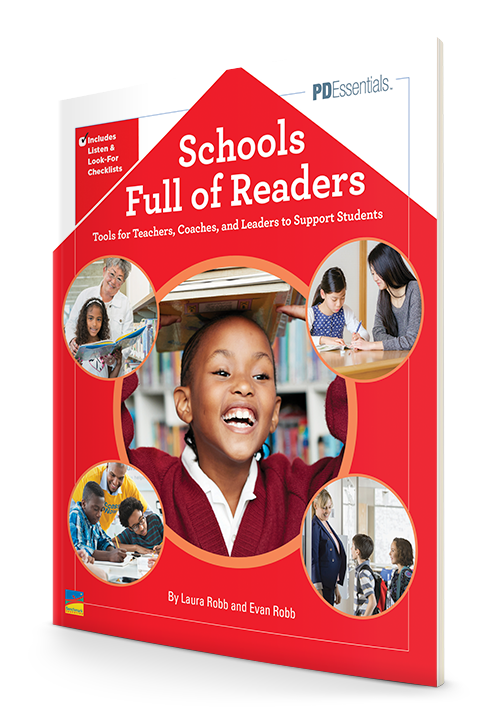Take Your School’s Reading Temperature

by Laura Robb and Evan Robb
As you create a process to evaluate your school’s culture of reading, include school leaders as well as teachers, literacy coaches, and your school’s librarian. There isn’t one resource or tool that will help you determine your school’s reading temperature. Explore and discuss the suggestions that follow, and know that lasting and meaningful changes occur when a school community works as a team to identify needs and investigate alternatives.
Look at Leadership
It’s important for the principal to help staff understand that creating a culture of reading is more important than test prep and raising test scores. In addition, leadership needs to look at current teaching approaches and, with staff, determine whether these are working for all students. Test scores will improve when the focus of instruction is on engaging and motivating readers and writers and using materials that meet every student’s needs.
Look at Needed Shifts
If one-size-fits-all instruction—basal programs, one class novel, workbooks—dominates the ELA curriculum, then it can meet the needs of students reading on grade level, but not those reading below or above that marker. Through collaborative discussions, groups can create a list of shifts that need to occur and might include instructional texts, funding classroom libraries, voluminous reading of culturally relevant texts, notebook writing, and ongoing professional learning.
Look at Your School
We encourage principals and literacy coaches to set aside time to walk through the hallways of their school and look at bulletin boards. Step into classrooms for about 10 to 15 minutes during different times of the day.
Watch, listen, circulate, and remember, jotting what you noticed after leaving the class. Here are some questions to guide you:
- Are bulletin boards filled with students’ work?
- Do students self-select books?
- Do class libraries have at least 600 books that represent the cultures of our country?
- Do students write about their reading in notebooks?
- Are teachers using a student-centered approach?
- Are there teacher read-alouds for instruction and for enjoyment?
- How often do students have meaningful discussions about books with a partner or small group?
Develop a Plan
Once you’ve taken your school's temperature, form a leadership team and develop a plan based on the needs your school identified. We suggest that you prioritize needs and revisit the list regularly to make adjustments. The Listen & Look-For Checklists in Schools Full of Readers will spotlight progress and indicate areas that need attention and additional professional learning.
Listen and Look-For Checklists
Administrators and literacy coaches can use the checklists to monitor the progress of a school-wide reading initiative. When teachers use them, they become self-reliant decision makers who can identify progress and continue to work on areas that require improvement. Checklists are for a wide range of topics such as Student Engagement, Class Libraries, Media Centers, Readers’ Notebooks, Professional Learning, and more.
The Gift of Time
Developing schools filled with readers takes time. To maintain a culture of reading, you must continually ask schools to assess where they are. We wrote Schools Full of Readers so you would have a guide as you begin your journey of creating a culture of reading. Time to begin!
What's Next?
Join authors Laura Robb, Evan Robb, and Travis Crowder and host Patty McGee for a free PD webinar, Developing Fearless Readers and Writers Panel, now available on demand. This panel of world-renowned experts will explore how educators can help students move past fear and hesitation to discover deep, authentic engagement with reading and writing. Watch now!
About the Authors
 |
Laura Robb is the author of more than 35 books on reading and writing. She received NCTE’s Richard W. Halle Award for outstanding middle level educator, and mentors many emerging authors and teachers. Laura is the co-author of Schools Full of Readers: Tools for Teachers, Coaches and Leaders to Support Students. |
 |
Evan Robb is Principal of Johnson-Williams Middle School in Berryville, Virginia. Prior to this, he was an English teacher, department chair, assistant principal, and a junior high school principal. He has received the Horace Mann Educator of the Year Award in recognition of his leadership. Evan is the co-author of Schools Full of Readers: Tools for Teachers, Coaches and Leaders to Support Students. |
You May Like: Schools Full of Readers: Tools for Teachers, Coaches and Leaders to Support Students
















